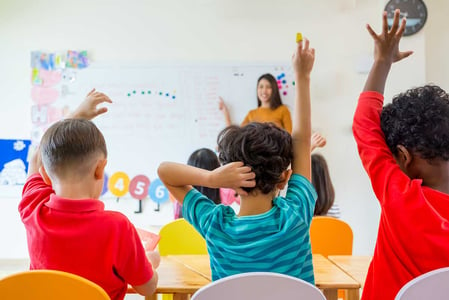
We’ve all had kids in the classroom who push limits, can’t manage their feelings, constantly demand attention. Believe it or not, they are sending you a message. When kids misbehave, they are operating based on mistaken learning. With time, patience, and planning you can help them relearn! If you reframe your thinking about children’s behavior and recognize that misbehavior is usually based on mistaken learning, you are well on your way to helping your kids.
Every behavior sends a message. The first thing we need to do is figure out what they are telling us. The children who push the hardest are the ones who are telling us the only way they know how..”I need HELP!” Ultimately, we want to help them learn self regulation, and find more appropriate ways to deal with strong feelings. That doesn’t happen without our help.
So, let’s dig in a bit and see what they are trying to communicate!
Behavior
Children’s behavior (or misbehavior) has a purpose. For whatever reason, this behavior has been reinforced and is, therefore, repeated. In other words, it’s working from the child’s point of view. We need to figure out what the benefit to the child is. We need to figure out what this behavior means, what message the child is sending. To think more deeply about what is going on.
Let’s think about a kid in a grocery store checkout line requesting, louder and louder, with more and more passion that mom/dad give them the candy. Mom/Dad say no, and the request becomes a demand and everyone is looking at the scene playing out. So, to deal with the embarrassment, the kid gets the candy. The next time that child is in that line, they are going to default to the decibel level that worked the last time. The parents try to ignore this, and boom! Up goes the level of hysteria. They give in. And the cycle reinforces the behavior. Lesson learned. Screaming=candy!
Now, think of a classroom. Everyone is playing in centers and it’s time to clean up. Sammy doesn’t want to stop playing (he’s just made the coolest tower!) and when the clean up reminder comes, Sammy runs away from the teacher, throwing toys. Sammy is feeling very upset to have his play disrupted. He is letting us know this in no uncertain terms. Sammy goes to time out, and the block tower is dismantled. Lesson learned. Run away=no clean up!
Children behave in certain ways to get something or to avoid something. And when they are successful (even if it is done in a challenging way) they will repeat the behavior. The best way to figure out what the purpose of the behavior is, is to track that behavior. Look for patterns, and find the antecedents. Make a note of what behavior you want to focus on (e.g. not cleaning up, screaming for something ), then when it happens, write down the time, what was happening before the behavior, and what was the outcome.
Classroom Management
Something else to consider is the way you manage your classroom. By intentionally planning for your day you send a message to your children. Your classroom can nurture, guide, excite, and connect you to your children. Our classroom culture also sends a message. Your planning should reflect the needs of your children. Are you thinking ahead to contribute to children learning how to self regulate? Ask yourself, is this a classroom that helps children feel connected, safe, do they understand what is expected? Does the classroom invite exploration, support play? Are your expectations for their behavior appropriate?
Here are some questions that children have:
- Am I safe here?
- Am I known here?
- Do my feelings matter?
- Can I feel accomplished here?
- Do I fit in?
- What does “right” mean?
- Is it okay to make a mistake?
- Can we have fun?
Remember our goal is to understand that messages frame behavior and our response to those messages reframe behavior. Let’s turn those mistakes around and help children learn what to do instead.
